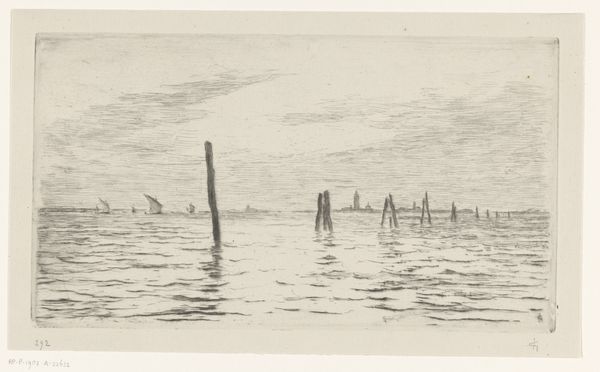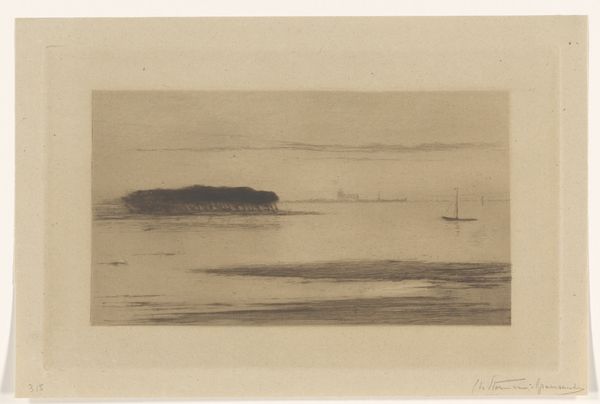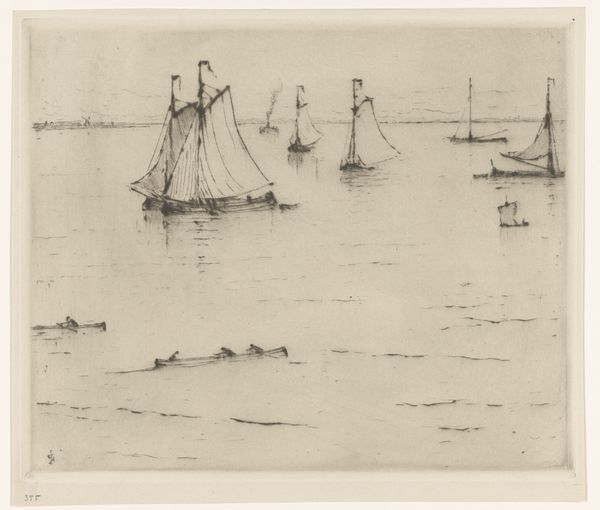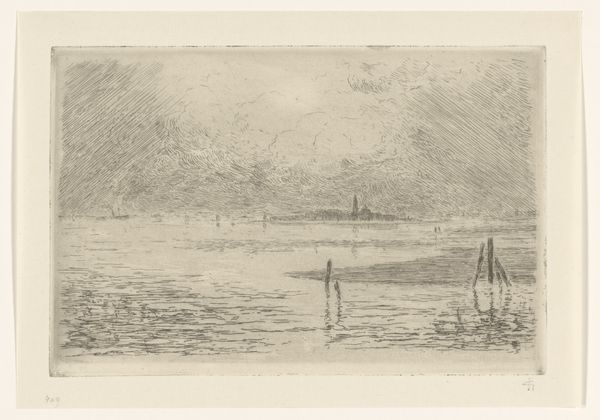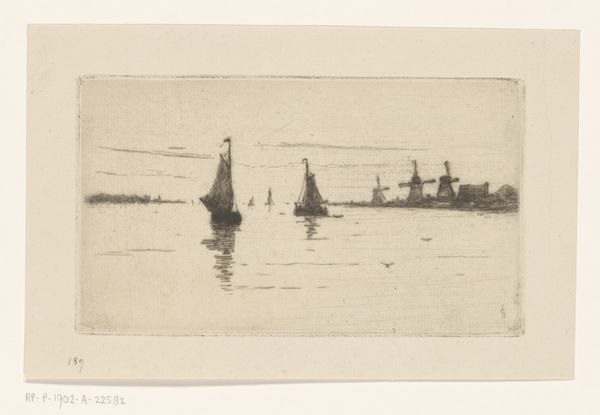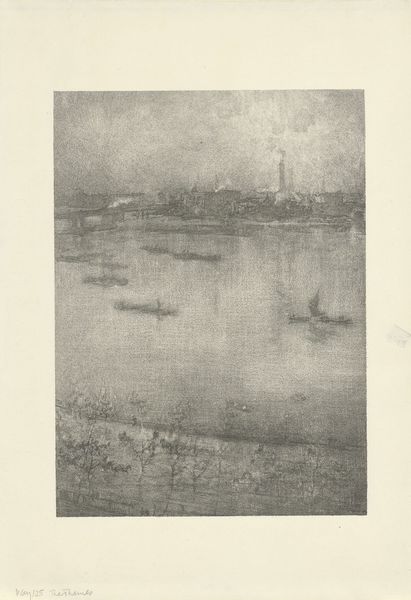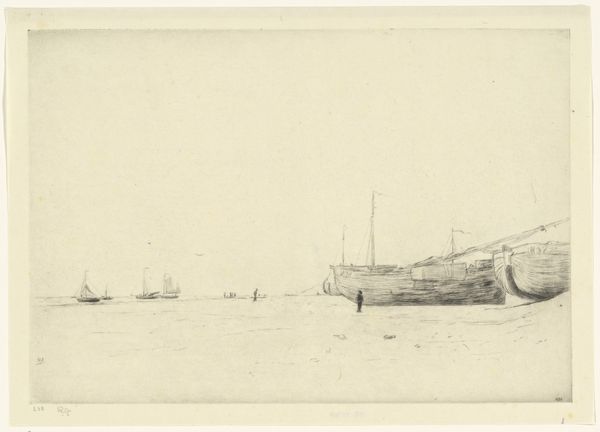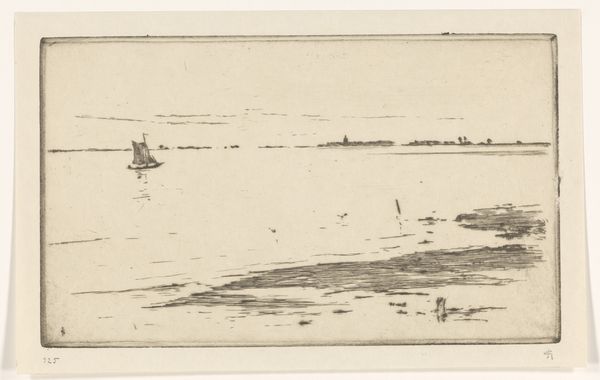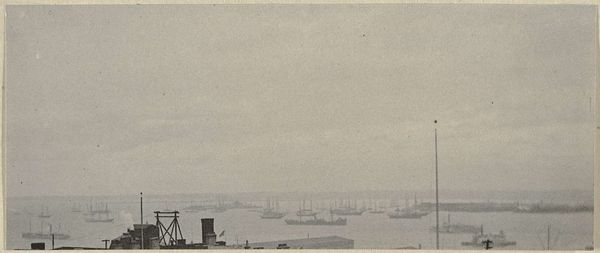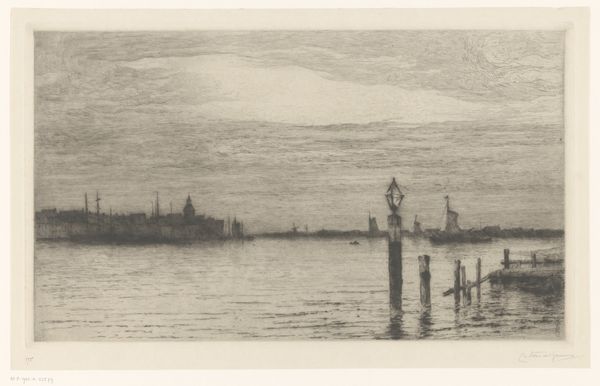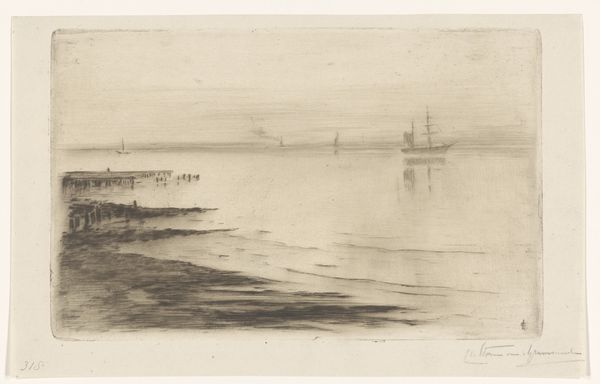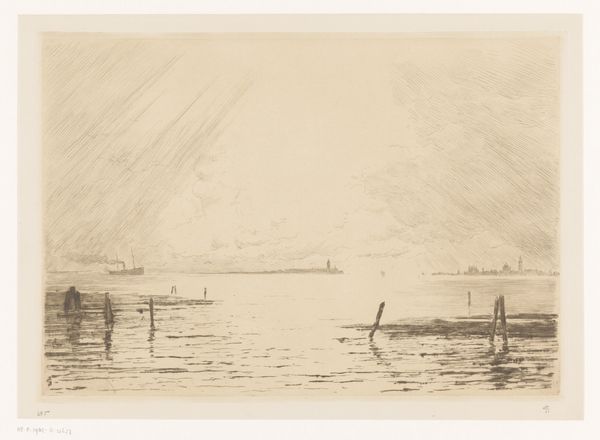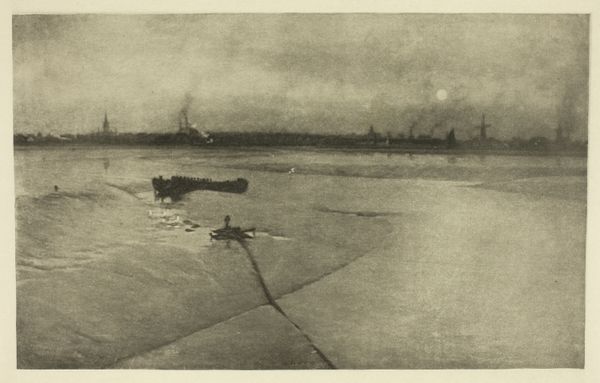
photography, gelatin-silver-print
#
pictorialism
#
impressionism
#
landscape
#
photography
#
gelatin-silver-print
Dimensions: 6.9 × 17.7 cm (image); 24.5 × 30 cm (paper)
Copyright: Public Domain
Editor: Here we have Peter Henry Emerson's "Low Water on Breydon," a gelatin-silver print from 1887. It’s strikingly quiet. The textures of the water and mud flats really stand out. What draws your eye when you look at this piece? Curator: The materiality, absolutely. The gelatin-silver process, crucial for its time, allowed for a democratization of image-making. Before, photography demanded significant resources. Consider who now could participate in image creation, distribution and perhaps even profit, reflecting new labor dynamics in visual culture. How do these visible traces of the printing process connect to the image’s overall feeling? Editor: It's interesting to think about. I guess the soft focus and the subtle gradations feel less... industrial, somehow? Almost hand-crafted. Curator: Precisely! Emerson advocated for "naturalistic photography," emphasizing the artist's hand in manipulating the final print. Think of this as a direct response to the rise of mass production. By embracing a more artistic approach to the photographic process, what statement do you think Emerson was making about the role of the artist and the value of their labor? Editor: So he's deliberately pushing back against photography just becoming a mechanical process? Claiming space for the artistic input and, by extension, the *value* of that skilled work? Curator: Exactly. And notice the image itself. A scene of labor, a working landscape. These are not detached aesthetic exercises, they reflect daily routines and cultural shifts. In many ways, the beauty we find is interwoven with socioeconomic realities. Editor: That really shifts my understanding. It's not just a pretty picture; it's a statement about the changing role of art and work. Thanks, that gives me so much more to think about. Curator: My pleasure. Recognizing the connection between materials, labor, and artistic intent changes everything.
Comments
No comments
Be the first to comment and join the conversation on the ultimate creative platform.

